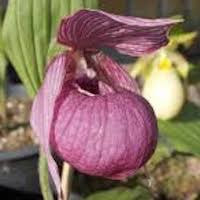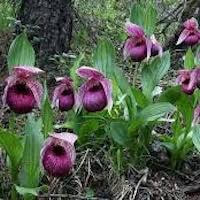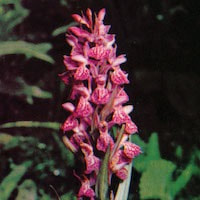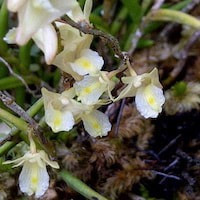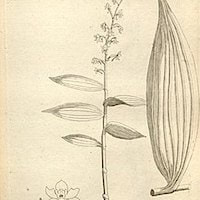WC11 - Women's Citrus 11 - She acts like summer, she walks like rain
Therapeutic Orchid notes:
|
Cypripedium franchetii Rolfe
Known as Maozhuo Lan (hairy spoon orchid) or Maoshao Lan in Chinese, this orchid grows in humid, rich soil on slopes and sparse woods. In traditional Chinese medicine, known as Wugongqi, it is used to regulate vital energy (qi), improve blood circulation, and treat conditions like coughs, pain relief, and chest discomfort. |
|
Cypripedium macranthos Sw.
Known by various Chinese names like Qilaixipuxie Lan (big flowered spoon orchid) and Dahuashao Lan (big flowered spoon orchid), this orchid is also called Dakoudaihua (large pocket orchid). In Chinese medicine, it's known as Dunshengcao or Wugongqi, while in Japan, it's called Atsumoriso. The plant contains antifungal compounds lusianthrin and chrysin. Chinese herbal usage includes using roots and stems for diuresis, reducing swelling, and stopping pain, while dried flowers are used to treat bleeding wounds. |
|
Dactylorhiza hatagirea (D. Don) Soo syn. Orchis latifolia Lindl.
Known as the Marsh Orchid, this plant is called Kuanyehongmen Lan (broad leaf red door orchid) and Hongmen Lan (red door orchid) in Chinese, with various names across India, Nepal, and Spain. In Ayurveda, it's known as Munjataka and has many medicinal uses: as an expectorant, tonic, and for treating conditions like diabetes, dysentery, and impotence. Chinese medicine uses the whole plant for heart health, kidney support, and to treat menstrual issues and dizziness. |
|
Dendrobium subulatum (Blume) Lindl.
Known as Anggerek in Malay, this orchid is a small epiphyte found in Thailand, Malaysia, Sumatra, Java, and Kalimantan. In the Malay Peninsula, its leaves are used as a poultice to ease headaches. Identified in 1930 by Mr. Burkhill, it was supplied by a native medicine-man and used traditionally for treating earaches. |
|
Habenaria aitchisonii H.G. Reich. Syn. Habenaria diceras Schltr.
Known as Duiduisheng (couple ginseng) or Shuangxianerye Lan (two threads, two-leaves orchid) in Chinese, this orchid species thrives in forests, thickets, and grasslands at altitudes of 2100–4300 m. Found in regions including Guizhou, Yunnan, Sichuan, Tibet, and the Himalayas, its roots are collected from Yunnan, Sichuan, and Tibet for medicinal use. They are valued for benefiting the kidneys and treating conditions like nephritis and hematuria. |
Other scent note
Scentopia Library Reference ingredient
Strawberry - Check details at Scentopia's scent library
Download the guided mediation that works best with this Orchid fragrance oil
| women_citrus_essential_oil_orchi_00011.mp3 | |
| File Size: | 165795 kb |
| File Type: | mp3 |

